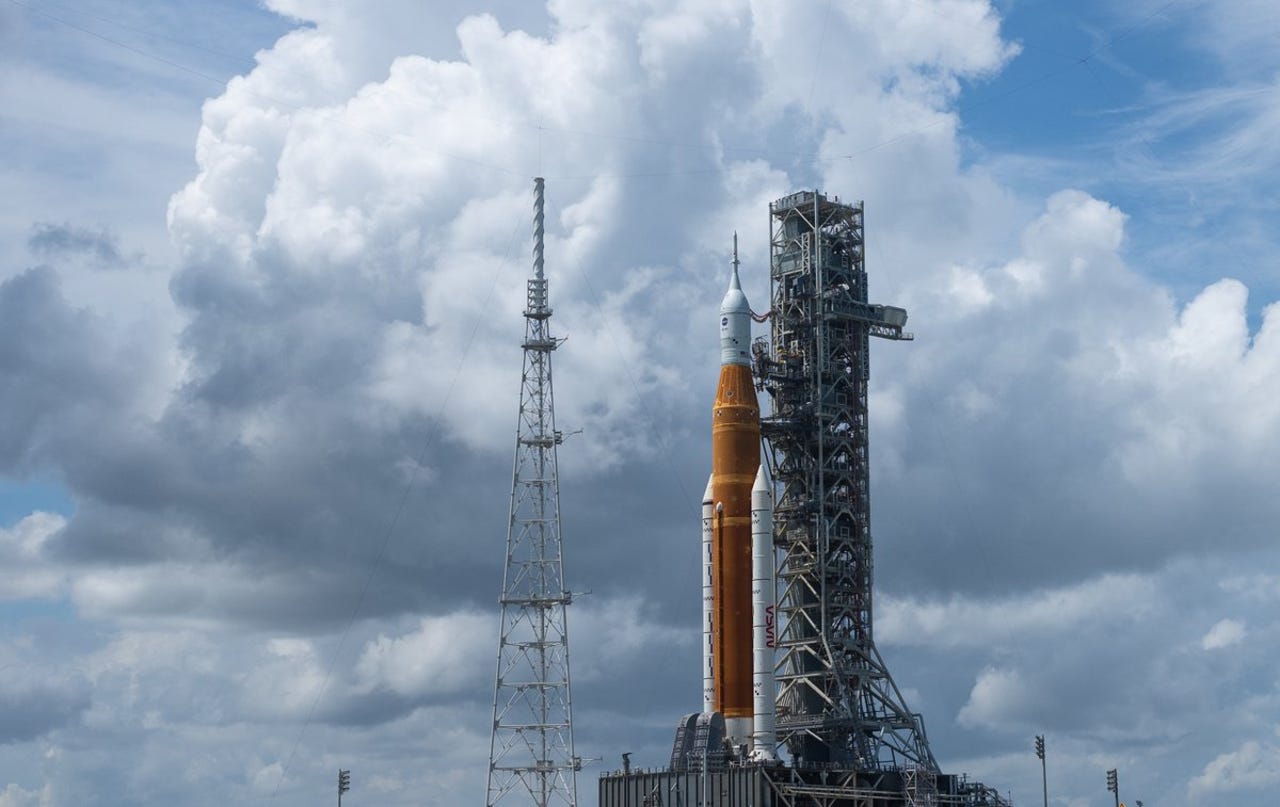































 Image: NASA
Image: NASA NASA's test-run to put astronauts back on the moon will likely be delayed until November after its Artemis moon rocket was moved into storage to protect it from Hurricane Ian.
The US space agency has hauled its huge Space Launch System (SLS) off the launch pad and back into the Vehicle Assembly Building (VAB) maintenance facility in advance of Hurricane Ian's expected arrival in Florida on Wednesday.
NASA hoped to keep SLS on the launch pad to preserve the October 3 backup launch date after cancelling its September 27 date -its third attempt to launch SLS and send the Orion spacecraft around the moon for a test run. With SLS now off the launch pad, NASA said the Artemis I launch could be pushed back to November.
"We know that the earliest it could go is late October, but more than likely we'll go in the window in the middle of November," NASA Administrator Bill Nelson told CNN.
Also:What is Artemis? Everything you need to know about NASA's new moon mission
NASA is juggling multiple problems at the Kennedy Space Center in Florida. Shortly after moving the rocket into storage, an "arc flash event" burned a rope in the mobile launcher. Staff evacuated the building, but no-one was injured and neither SLS or Orion were at risk, according to NASA.
"At approximately 11:45 a.m. today, a fire alarm was triggered in the Vehicle Assembly Building at NASA's Kennedy Space Center in Florida. The notification came when an arc flash event occurred at a connector on an electrical panel in High Bay 3. A spark landed on a rope marking the boundary of the work area. The rope began to smolder, workers pulled the alarm, and employees evacuated the building safely," NASA said in a blogpost.
NASA began moving SLS off the launch pad at 11:21pm ET Monday for the its 4-mile (6.4km) trek to the VAB.
After the storm has passed, NASA will conduct inspections to determine impacts at the center and establish a plan for the next launch attempt.
It will need to replace the 'limited life' items in SLS, including the core stage flight termination system batteries, and also retest the system to ensure it can terminate the flight if an emergency occurs during the next launch.
The SLS core stage, manufactured by Boeing, stands 212 feet (64.6 meters) tall and measures 27.6 feet (8.4 meters) wide.
"Our next steps will include putting together options to position us best for our next launch attempt while weighing what our work plan should be in the Vehicle Assembly Building. We'll launch when we're ready while ensuring the safety of our employees and the vehicle," Jim Free, NASA's associate administrator for exploration systems development, said in a tweet.
Over the past few days, we met and made the necessary decision to roll back#Artemis I to the Vehicle Assembly Building. We held until we had the most certainty on the storm, ensuring we had good weather to roll back, and our employees could address the needs of their families. pic.twitter.com/ygtJ578acs
- Jim Free (@JimFree) September 27, 2022
Per CNN, Free said there were 20 limited-life components in SLS that it will assess before the next attempt.
NASA has also been securing facilities and equipment to prevent them becoming projectiles during the hurricane. It currently expects damaging winds within 24 hours.
Artemis has cost NASA$40 billion so far and is projected to cost$93 billion through to 2025. It costs about$4 million per launch. NASA hopes to launch its first mission with astronauts in 2024 or 2025.
 Etiquetas calientes:
innovación
Espacio espacio
Etiquetas calientes:
innovación
Espacio espacio